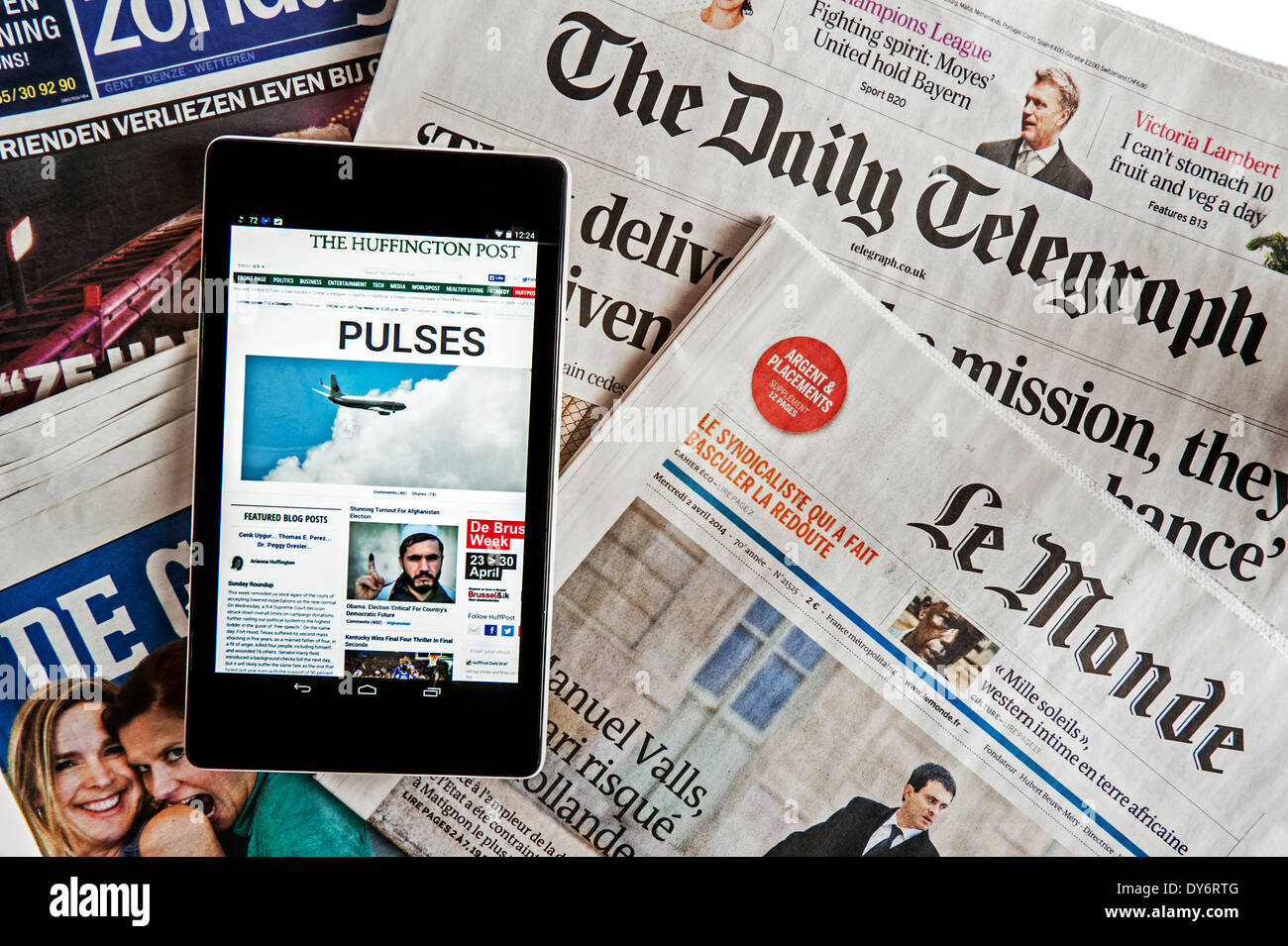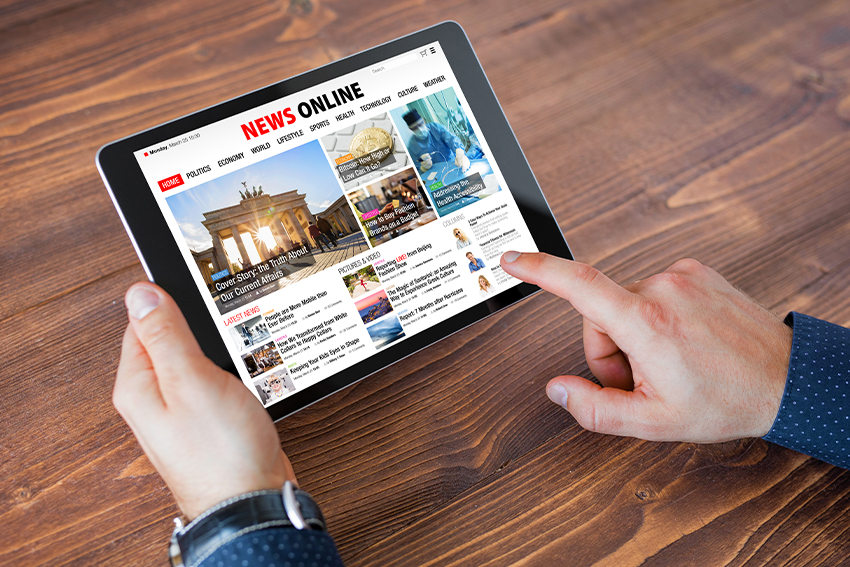The Influence of Social Media heading We Eat News Online
Social network has actually fundamentally transformed news consumption. It gives prompt access to details, usually overshadowing conventional media electrical outlets. This quick dissemination comes with challenges. Customers encounter the threat of running into false information and coming to be entraped in resemble chambers. The algorithms driving individualized content can cover diverse point of views. As these characteristics evolve, comprehending their ramifications comes to be necessary for educated interaction in public discussion. What strategies might assist navigate this facility landscape?
The Advancement of News Consumption in the Digital Age
As technology progressed, the method people consumed news changed substantially in the digital age (stnews.live). Traditional papers and broadcast media started to decline as the net became a key source of details. On the internet systems offered instant access to newspaper article, video clips, and podcasts, permitting individuals to remain informed any time. The ease of smart phones better accelerated this change, enabling individuals to receive updates on the go
In addition, the increase of news collectors and sites assisted in the intake of varied point of views, empowering users to customize their news consumption based on personal rate of interests. This advancement additionally motivated news companies to adapt their methods, concentrating on digital web content and engaging visitors with multimedia styles. Consequently, the traditional obstacles of time and area in news distribution lessened, bring about a more prompt and personalized news experience for target markets worldwide.
The Duty of Social Network Operatings Systems in News Distribution
Social network systems have transformed news distribution by providing instantaneous access to information. Their algorithm-driven material curation commonly focuses on involvement over precision, leading to significant integrity obstacles (stnews.live). As customers browse this landscape, the ramifications for news usage and public discussion ended up being significantly intricate
Instant News Access
Conventional news electrical outlets have long been the key source of information, the surge of social media platforms has actually substantially changed how news is accessed and consumed. Instant news gain access to has actually come to be a trademark of the digital age, making it possible for individuals to get updates in real time. Systems such as Twitter, Facebook, and Instagram enable news to spread swiftly, usually exceeding conventional media in rate and reach. Customers can share tales, discuss occasions, and involve with reporters, developing a dynamic interaction between the target market and news web content. This immediacy cultivates a culture of seriousness, motivating customers to seek information swiftly. Subsequently, the assumption for prompt news has actually improved journalistic methods, compelling wire service to adjust their techniques to satisfy the demands of a fast-paced digital environment.
Algorithm-Driven Material
While users proactively engage with material on social networks, the algorithms that regulate these systems play an essential role in figuring out which news stories gain visibility. These formulas assess individual actions, preferences, and interaction metrics to curate tailored news feeds. Consequently, certain stories might be intensified while others remain odd, usually prioritizing sensational or trending subjects over substantive coverage. This discerning exposure shapes individuals' assumptions of existing occasions and affects public discourse. The reliance on algorithm-driven web content can produce echo chambers, where individuals are generally revealed to point of views that align with their own beliefs. Consequently, the dynamics of news distribution on social media systems substantially affect how people take in and translate info in the digital age.

Trustworthiness Challenges
As customers increasingly turn to social media sites for news, the trustworthiness of info experienced on these platforms ends up being a pressing problem. The decentralized nature of social media sites allows anyone to release material, frequently obscuring the lines between trusted journalism and misinformation. Formulas prioritize interaction over accuracy, leading to the widespread dissemination of spectacular or misleading stories. This environment poses considerable difficulties for customers trying to recognize reliable resources. Social media platforms, while endeavoring to battle misinformation through fact-checking and web content small amounts, face criticism for disparities and biases in their methods. Ultimately, the obligation lies with users to critically assess the news they consume, as the quick spread of details commonly exceeds confirmation efforts by platforms.
The Increase of Citizen Journalism and User-Generated Web Content
The surge of citizen journalism has equipped everyday people to share news and point of views, frequently offering insights that conventional media may overlook. This change additionally provides considerable difficulties, particularly the spread of misinformation that can arise from unproven material. As user-generated material comes to be extra widespread, the balance in between authentic voices and accuracy in coverage stays an important issue.
Encouraging Daily Voices

Challenges of Misinformation
While the increase of citizen journalism has opened opportunities for varied voices in the media landscape, it has actually likewise presented significant difficulties connected to misinformation. The simplicity of sharing information with social media systems enables people to disseminate news rapidly, but this quick spread commonly comes with the cost of precision. User-generated material frequently does not have the extensive fact-checking and content oversight that typical journalism provides. Sensationalized or false stories can obtain grip, misdirecting target markets and forming public assumption. The mixing of opinion and fact within social media makes complex the distinction in between credible information and false information. Consequently, customers must navigate a significantly intricate media environment, needing important assuming abilities to determine reliable news resources in the middle of the sound

False information and Its Effects for Public Discussion
As social media platforms significantly control the landscape of information circulation, the expansion of misinformation poses substantial obstacles for public discussion. Misinformation, commonly made to misguide or provoke psychological actions, can misshape perceptions of truth and threaten count on in reputable sources. This phenomenon leads to polarized viewpoints, as people move in the direction of echo chambers that reinforce their beliefs, better entrenching divisions within culture.
The effects for public discourse are profound. When citizens depend on incorrect information, purposeful dialogue diminishes, and the autonomous process suffers. False information can prompt worry and complication, influencing public health and wellness, safety and security, and political security. Therefore, you can check here cultivating media proficiency becomes necessary, equipping people to critically examine info and determine truth from fiction. Attending to the difficulties postured by false information is critical for preserving the honesty of public discourse and making certain a well-informed populace capable of engaging in constructive discussions.
The Impact of Algorithms on News Presence
Given the central role of formulas in figuring out content visibility, their influence on news consumption is extensive. These formulas, made use of by social networks systems, focus on particular types of material based upon individual involvement and preferences. As a result, newspaper article that straighten with preferred trends or target market passions are a lot more likely to be displayed plainly, while less mind-blowing stories may be ignored. This produces an environment where individuals are exposed mainly to information that strengthens their point of views, potentially causing echo chambers.
The constant advancement of algorithms implies that news organizations should adjust their techniques to straighten with these altering criteria, commonly prioritizing clickbait or psychologically billed headings. The honesty of news reporting can be compromised, as vital tales may not get the visibility they are worthy of. The algorithmic shaping of news presence for that reason plays an important duty in affecting public perception and understanding of present events.
The Change Towards Aesthetic Narration in News Media
Increasingly, news media is accepting aesthetic storytelling as an effective device to engage audiences. This strategy leverages pictures, video clips, infographics, and interactive aspects to share info better than typical text-based formats. As focus extends shorten, visuals offer a quick, impactful means to communicate complicated tales and get customers' interest.
Systems like Instagram and TikTok have additional accelerated this pattern, engaging why not try this out wire service to adjust their content approaches to fit these visually-driven settings. By including engaging visuals, news outlets can improve psychological links and foster higher understanding of topical problems.
Visual narration allows for even more diverse stories, showcasing multiple point of views via dynamic presentations. As target markets progressively eat news with mobile devices, the change toward visuals not just accommodates individual choices yet also aids to break down barriers to info gain access to. Inevitably, this advancement mirrors a broader makeover in how news is produced and eaten in the electronic age.
Future Trends: Navigating the Changing Landscape of News Intake
While the electronic landscape continues to advance, news intake is positioned for substantial improvement driven by emerging technologies and altering audience habits. As expert system and machine knowing advance, personalized news feeds will certainly come to be a lot more common, allowing users to obtain content tailored to their interests. This modification might result in higher involvement but also raise worries regarding resemble chambers and misinformation.
Moreover, the rise of voice-activated devices and smart speakers will certainly influence how news is provided, changing the focus from aesthetic to acoustic formats. This trend may motivate news companies to adopt even more succinct and interesting audio web content.

Regularly Asked Concerns
Exactly How Do Social Media Site Interactions Affect News Reputation?
Social media site communications can considerably influence understandings of news reputation. Interaction metrics, such as likes and shares, frequently shape target market count on, with popular posts getting regarded authenticity, despite the precision or reliability of the info provided.
What Duty Do Influencers Play in Shaping News Narratives?
Influencers substantially form news stories by leveraging their systems to amplify specific stories, commonly customizing content to their audience. This can lead to biased point of views, influencing public perception and focusing on sensationalism over accurate reporting.
Exactly How Can Users Identify Reliable News Resources on Social Media Site?
Individuals can recognize reliable news sources on social media by checking the source's credibility, verifying facts through several electrical outlets, examining the professionalism and reliability of the material, and recognizing possible predispositions in reporting to guarantee precise details.
What Influence Does Social Media Site Carry Standard Journalism Jobs?
Social media greatly impacts traditional journalism tasks by modifying profits models, lowering need for print media, and fostering competitors from resident reporters. Consequently, numerous professionals deal with job instability and must adapt to rapidly altering media landscapes.
How Do Different Demographics Consume News on Social Media Site?
Different demographics show varied choices for news consumption on social networks. More youthful target markets prefer systems like TikTok and Instagram for quick updates, while older individuals have a tendency to prefer Twitter and facebook for more extensive discussions and articles.